˝
•
‰
˚
�
˝
•
‰
˚
�
基于 FPGA 的自适应滤波器设计
摘 要
数字滤波器较模拟滤波器相比,具有信噪比高,过渡带性能好,高可靠
性及可扩展性,设计灵活方便的优势,应用范围越来越广。随着专用数字信
号处理芯片的发展,数字滤波器的可实现性能以及处理速度得到了极大的
提升,FPGA(现场可编程门阵列)作为一种新型数字信号处理芯片,具有
数字信号处理速度快、数据并行处理并且利用硬件编程语言直接进行硬件
设计等特点,自适应滤波器的 FPGA 设计以及优化方法,是目前的一个研
究热点。
本文对自适应滤波器进行 Matlab 仿真,以对其结构特性以及运算特点
进行了解,利用 Matlab 生成测试信号与 FPGA 仿真软件 Modelsim 进行联
合 设 计 以 及 行 为 仿 真 , 采 用 Altera 公 司 的 Cyclone IV 系 列 芯 片
EP4CE15F17C8 为载体的开发板进行设计仿真,在设计过程中,充分利用
FPGA 可以并行处理以及快速的数字信号处理的特点进行针对性的结构设
计。在此基础上做了以下工作。
在充分了解滤波器,自适应横向滤波器,自适应陷波滤波器以及 FFT
变换原理的基础上,选择并搭建了设计平台,在目前自适应横向滤波器的
FPGA 设计的研究基础上,采用模块化的设计方法,单独设计可重复调用的
串行 FIR 滤波模块以及串行 LMS 权值更新模块,对两种模块的设计以及综
合分别进行了设计以及仿真实验,通过并行调用两种不同模块,每种调用四
个的方式设计一个 16 阶的滤波器为例来阐述模块化设计方法,并设计 32
阶 64 阶分别与全串行以及全并行设计方式的处理速率以及逻辑资源调用进
行比较,结果说明运算速率与并行调用模块数量成正比,远快于全串行结构
的设计方式,并且对于 64 阶全并行系统来说,极大的减少了硬件资源的消
I
˝
•
‰
˚
�
耗,提高了设计灵活性。在此设计的基础上,针对传统自适应陷波滤波器的
滤波频率固定不变的缺陷,提出了一种频域变换法检测噪声特征频率,并可
以根据特征噪声频率实时改变陷波频率的滤波器设计方法,为了减小设计
复杂性,研究了符号 LMS 自适应陷波器算法,通过 Matlab 仿真实验选取符
号的特征变量。并对噪声信号提取算法进行了介绍和设计仿真,最终设计出
根据噪声频率自动调节陷波中心频率的自适应陷波滤波器,并对滤波器性
能进行了 Modelsim 仿真研究,自适应陷波器具有能有效的滤除对应频率的
单频噪声信号,并且根据噪声的频率特性自动调节滤波频率的特点。
针对两种自适应滤波器的 FPGA 设计,体现了 FPGA 在自适应滤波器
设计时灵活性以及针对性,两种不同类型的自适应滤波器,可以分别适用于
普通数字滤波器无法有效发挥作用的场合,同时本文的设计方法对其它类
型数字信号处理系统的 FPGA 实现具有一定参考价值。
关键词:现场可编程门阵列,自适应横向滤波器,模块化设计,自适应陷
波器
II
˝
•
‰
˚
�
DESIGN OF ADAPTIVE FILTER BASED ON FPGA
ABSTRACT
Compared with analog filter, digital filter has the advantages of high signal
to noise ratio, good performance of transition zone, high reliability and
expansibility, flexible and convenient design and application. With development
of special digital signal processing chip, digital filter CAN achieve performance
and processing speed has been greatly improved, the realization of the use of the
better performance of digital chip design more complex filter, so that the adaptive
filter realization and application become possible, FPGA (field programmable
gate array) is a new type of digital signal processing chip, with parallel processing
of data and CAN use hardware programming language directly the characteristics
of the hardware design, is currently a hot research topic for study of adaptive filter
is implemented on FPGA.
The Matlab simulation of the adaptive filter, to understand the characteristics
of the structure and operation characteristics, and the use of Matlab generating
test signals and FPGA simulation software Modelsim joint behavior simulation of
FPGA design, then to Altera cyclone IV series chip ep4ce15f17c8 as the carrier
of the development board for simulation design, in the design process, make full
use of FPGA parallel processing and fast digital signal processing for structural
design. On this basis, the following work has been done:
The filter needed to fully understand, adaptive transversal filter, adaptive
notch filter and FFT transform based on the principle of selection and build a
design platform, first in the basic research of current FPGA adaptive transversal
filter realization, using modular design method, the structure is divided into single
and serial FIR filter module serial LMS weight update module, the design of the
two modules and integrated were designed, and simulation experiments, through
III
˝
•
‰
˚
�
the parallel call two different modules, each call the four way to design a 16 order
filter as an example to illustrate the modular design method, and design of 32
order and 64 order respectively with serial and the processing rate parallel design
methods and logic resources call were compared. The results show that the
operation rate and parallel call module is proportional to the number, far faster In
the whole serial design mode, and for the 64 order all parallel system, greatly
improve the design flexibility, reduce the consumption of hardware resources.
After the design on this basis, the traditional adaptive trapped wave filter, filter
frequency fixed defects, put forward a method of frequency domain transform
detection noise characteristic frequency, and CAN change in real time according
to the characteristics of noise frequency trapped wave frequency filter design
methods, in order to reduce the design complexity and the sign LMS adaptive
notch filter algorithm, the characteristic variables of the symbol is determined
through the simulation experiment of Matlab. And the noise signal extraction
algorithm are introduced and the simulation design, the final design according to
frequency noise automatically adjust the trapped wave frequency adaptive notch
filter, and on the performance of the filters were Modelsim simulation research,
the adaptive notch filter has CAN effectively filter on the frequency of the single
frequency noise signal, and does not affect the characteristics of waveforms useful.
For the FPGA design of two based on the LMS adaptive algorithm of filter,
reflecting the FPGA in the adaptive filter design flexibility and uniqueness, two
different types of adaptive filter CAN be respectively applicable to ordinary
digital filter CAN not effectively play the role of occasions, also the design
method of other types of digital signal processing system based on FPGA
implementation has a certain reference value.
KEY WORDS: FPGA,Adaptive transversal filter,Modular design,Adaptive-
-notch filter
IV
˝
•
‰
˚
�
目 录
摘 要 ........................................................................................................................................... I
ABSTRACT ............................................................................................................................. III
第一章 绪论 .............................................................................................................................. 1
1.1 研究目的与意义 .......................................................................................................... 1
1.1.1 数字滤波器简介 ............................................................................................... 1
1.1.2 基于 FPGA 的自适应滤波器研究意义 ........................................................... 2
1.2 国内外研究现状 .......................................................................................................... 3
1.2.1 自适应滤波器研究现状 ................................................................................... 3
1.2.2 自适应滤波器的 FPGA 实现研究现状 ........................................................... 5
1.3 课题的主要研究内容 .................................................................................................. 6
1.3.1 课题的主要工作 ............................................................................................... 6
1.3.2 课题的研究实现方案 ....................................................................................... 7
1.4 本章小结 ..................................................................................................................... 7
第二章 自适应陷波滤波器的原理以及实验平台 .................................................................. 9
2.1 自适应滤波器理论介绍 .............................................................................................. 9
2.1.1 IIR 与 FIR 滤波器简介 ..................................................................................... 9
2.1.2 LMS 算法原理 ................................................................................................ 13
2.1.3 自适应陷波器的原理 ..................................................................................... 15
2.1.4 FFT 变换的原理 ............................................................................................. 17
2.2 设计平台介绍 ............................................................................................................ 20
2.2.1 自适应滤波器的设计平台 ............................................................................. 20
2.2.2 自适应陷波滤波器接口 ................................................................................. 22
2.3 本章小结 .................................................................................................................... 24
第三章 自适应横向滤波器的 FPGA 实现 ............................................................................ 27
3.1 自适应滤波器的 Matlab 仿真研究 ........................................................................... 27
3.1.1 自适应滤波器的功能仿真研究 ..................................................................... 27
3.1.2 自适应滤波器的滤波收敛性能研究方法 ..................................................... 28
3.1.3 自适应滤波器的收敛性能研究 ..................................................................... 30
V
˝
•
‰
˚
�
3.2 自适应滤波器的 FPGA 模块化设计 ....................................................................... 33
3.2.1 自适应滤波器 FPGA 模块化设计原理 ........................................................ 33
3.2.2 FIR 串行模块的设计 ..................................................................................... 34
3.2.3 LMS 串行模块的设计 ................................................................................... 35
3.2.4 自适应滤波器多级处理结构整体设计 ......................................................... 36
3.2.5 结构特性分析 ................................................................................................. 39
3.3 本章小结 .................................................................................................................... 40
第四章 自适应陷波滤波器的 FPGA 设计 ........................................................................... 41
4.1 符号 LMS 算法的梯度特征值选择及系统结构设计 ............................................. 41
4.1.1 符号 LMS 算法的梯度特征值选择 .............................................................. 41
4.1.2 FIR 自适应陷波滤波器系统结构设计 ......................................................... 44
4.2 噪声信号分析以及参考信号频率值提取 ................................................................ 46
4.2.1 FFT 变换的功能 ............................................................................................. 46
4.2.2 FFT 变换的参数介绍 ..................................................................................... 46
4.2.3 FFT IP 核的调试以及功能测试 .................................................................... 48
4.2.4 特征噪声频率提取算法 ................................................................................. 50
4.3 自适应陷波模块的设计 ............................................................................................ 54
4.3.1 自适应陷波器的 Matlab 仿真 ....................................................................... 54
4.3.2 自适应陷波器 FPGA 设计时的数据截取方法 ............................................ 55
4.3.3 自适应陷波器模块的 FPGA 设计 ................................................................ 56
4.3.4 自适应陷波器的整体设计 ............................................................................ 60
4.4 采用频域变换法自适应陷波器滤除工频噪声 ....................................................... 60
4.4.1 提高系统实时性的方法 ................................................................................. 61
4.4.2 模拟与实验验证 ............................................................................................. 62
4.5 本章小结 .................................................................................................................... 65
第五章 总结与展望 ................................................................................................................ 67
参考文献 .................................................................................................................................. 69
致谢 .......................................................................................................................................... 75
攻读学位期间发表的学术论文目录 ...................................................................................... 77
VI
˝
•
‰
˚
�

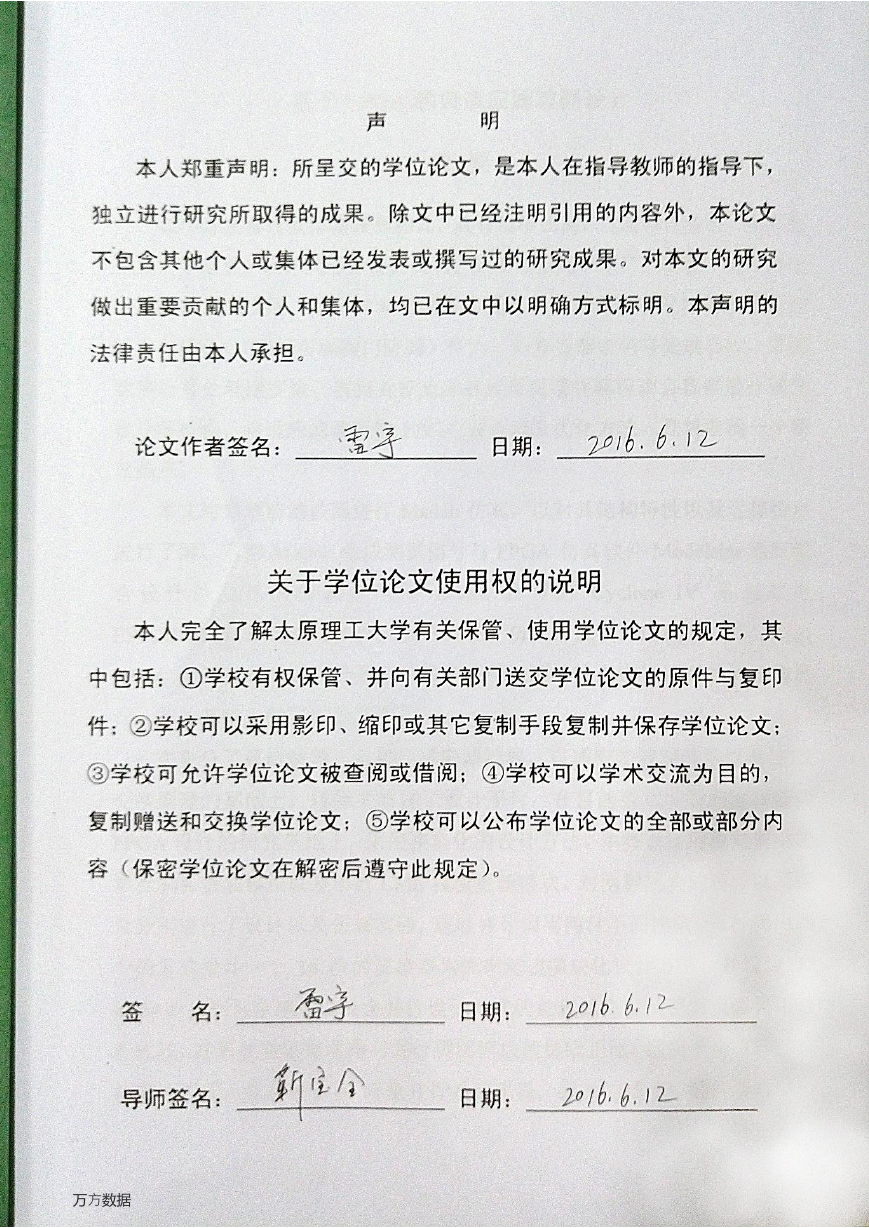
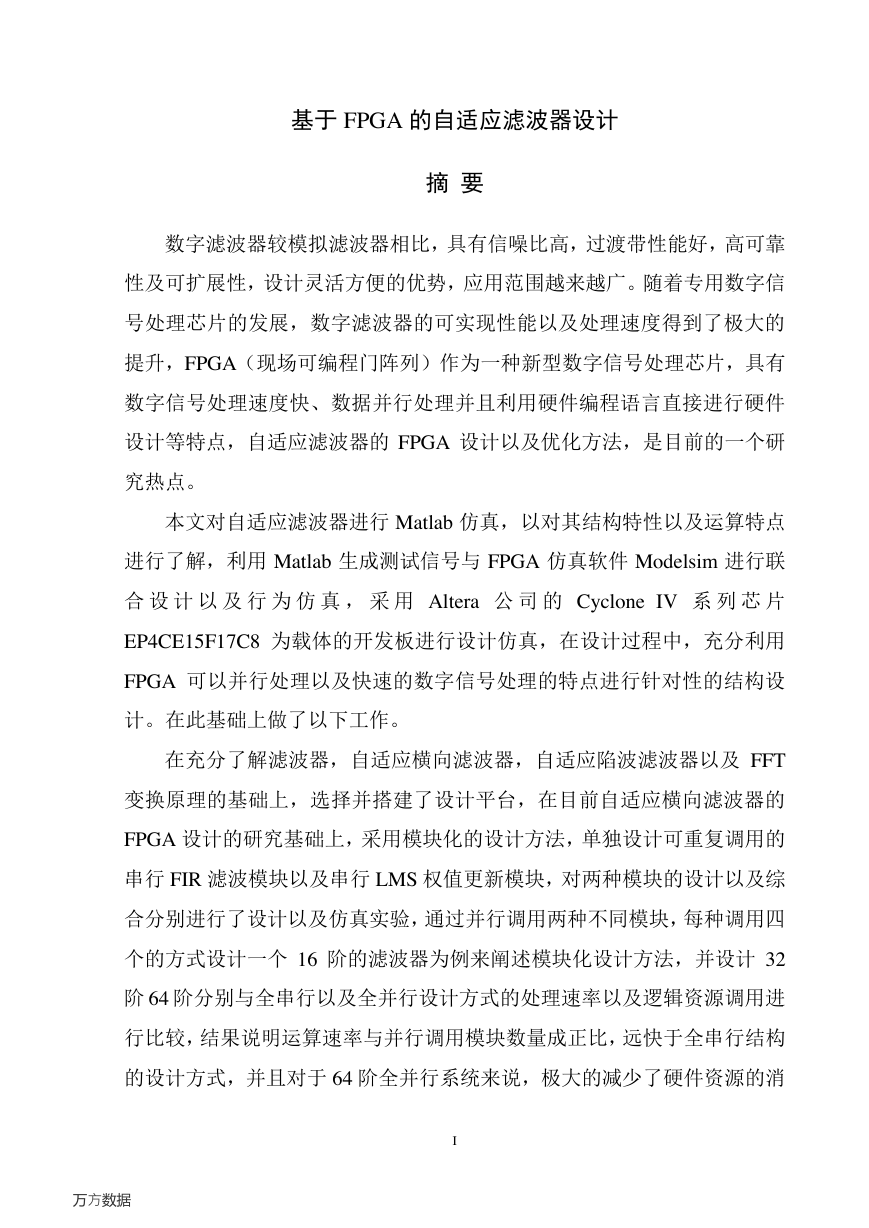
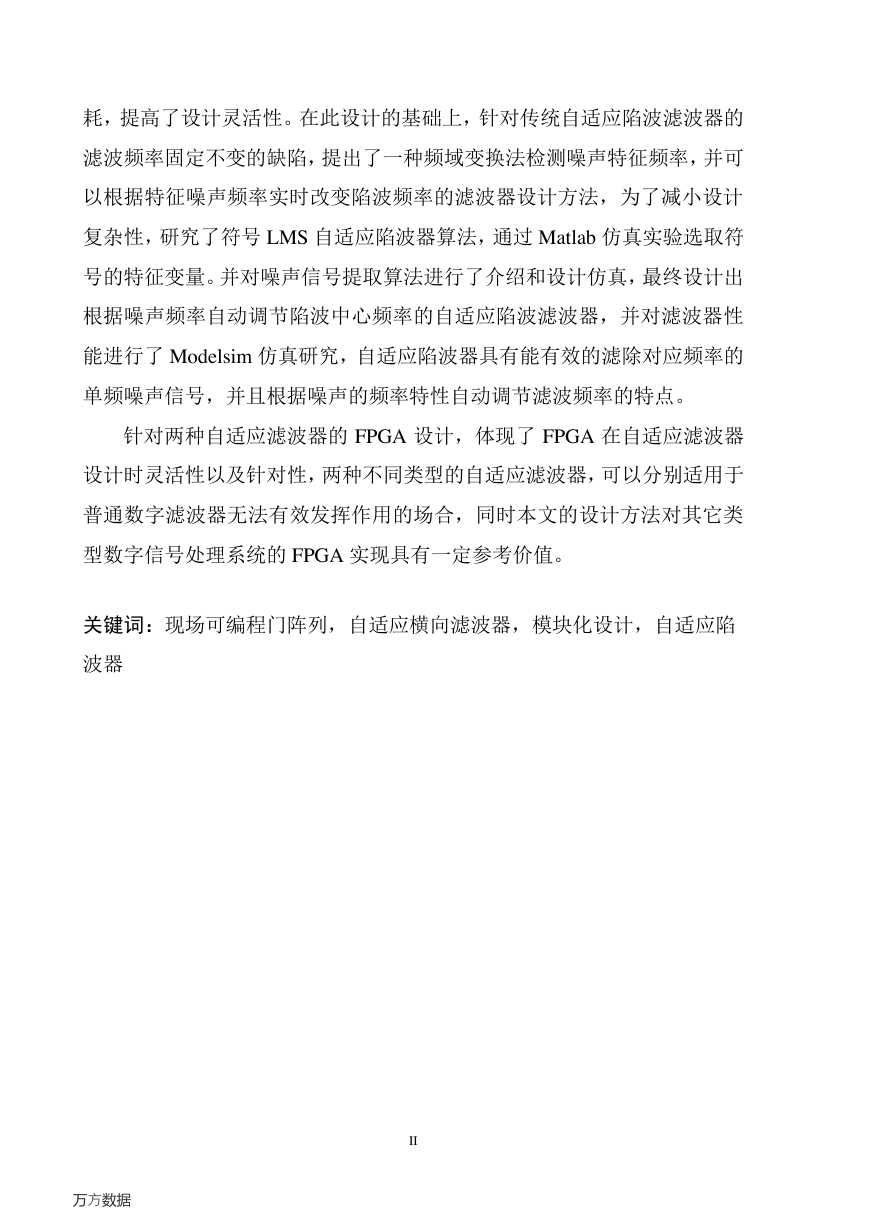
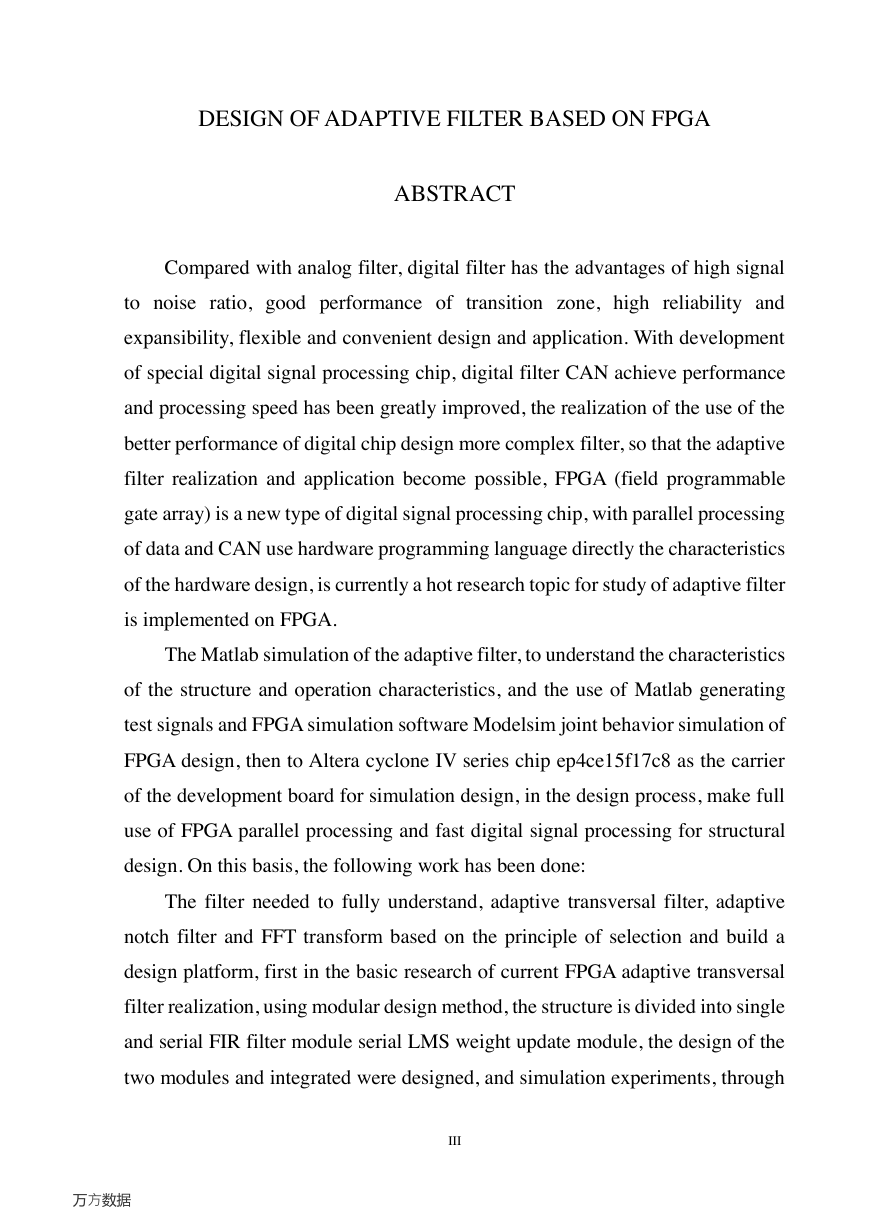

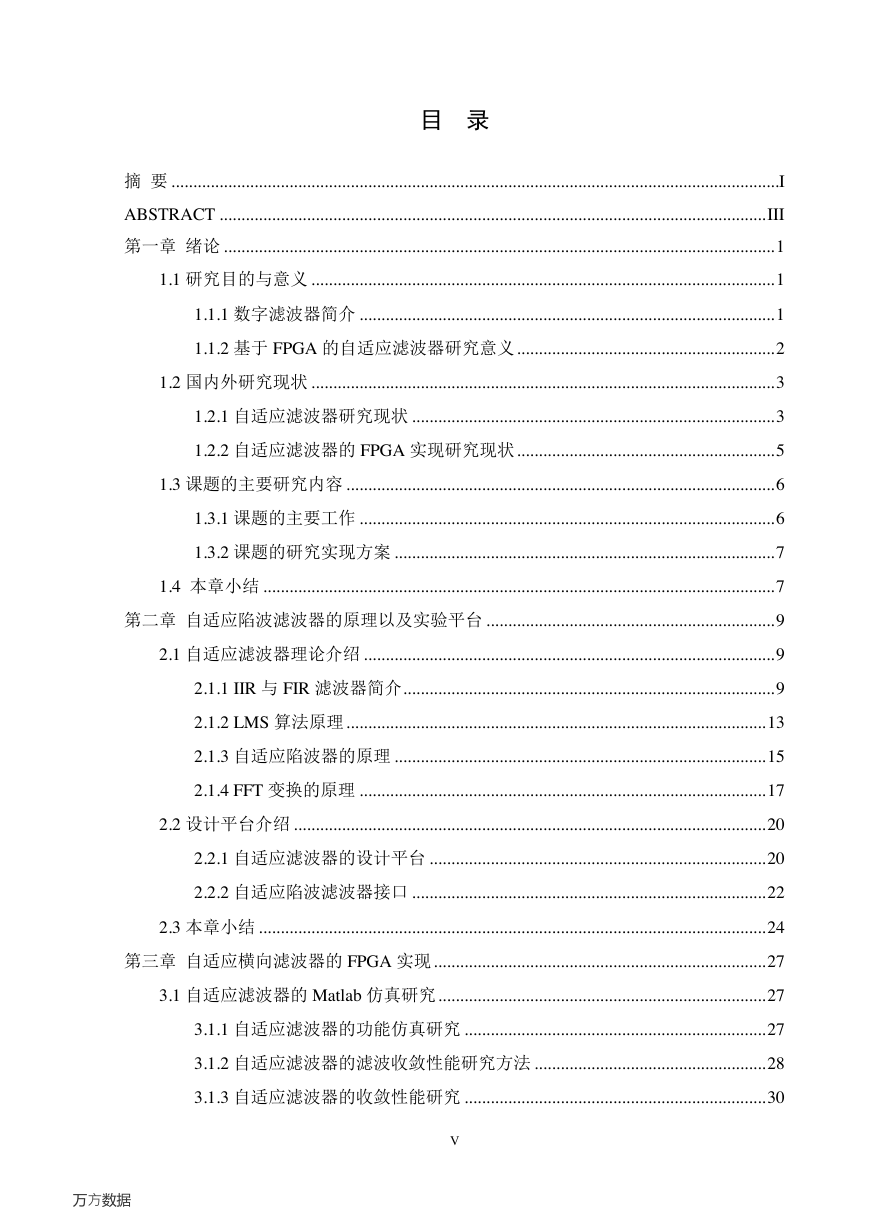









 2023年江西萍乡中考道德与法治真题及答案.doc
2023年江西萍乡中考道德与法治真题及答案.doc 2012年重庆南川中考生物真题及答案.doc
2012年重庆南川中考生物真题及答案.doc 2013年江西师范大学地理学综合及文艺理论基础考研真题.doc
2013年江西师范大学地理学综合及文艺理论基础考研真题.doc 2020年四川甘孜小升初语文真题及答案I卷.doc
2020年四川甘孜小升初语文真题及答案I卷.doc 2020年注册岩土工程师专业基础考试真题及答案.doc
2020年注册岩土工程师专业基础考试真题及答案.doc 2023-2024学年福建省厦门市九年级上学期数学月考试题及答案.doc
2023-2024学年福建省厦门市九年级上学期数学月考试题及答案.doc 2021-2022学年辽宁省沈阳市大东区九年级上学期语文期末试题及答案.doc
2021-2022学年辽宁省沈阳市大东区九年级上学期语文期末试题及答案.doc 2022-2023学年北京东城区初三第一学期物理期末试卷及答案.doc
2022-2023学年北京东城区初三第一学期物理期末试卷及答案.doc 2018上半年江西教师资格初中地理学科知识与教学能力真题及答案.doc
2018上半年江西教师资格初中地理学科知识与教学能力真题及答案.doc 2012年河北国家公务员申论考试真题及答案-省级.doc
2012年河北国家公务员申论考试真题及答案-省级.doc 2020-2021学年江苏省扬州市江都区邵樊片九年级上学期数学第一次质量检测试题及答案.doc
2020-2021学年江苏省扬州市江都区邵樊片九年级上学期数学第一次质量检测试题及答案.doc 2022下半年黑龙江教师资格证中学综合素质真题及答案.doc
2022下半年黑龙江教师资格证中学综合素质真题及答案.doc